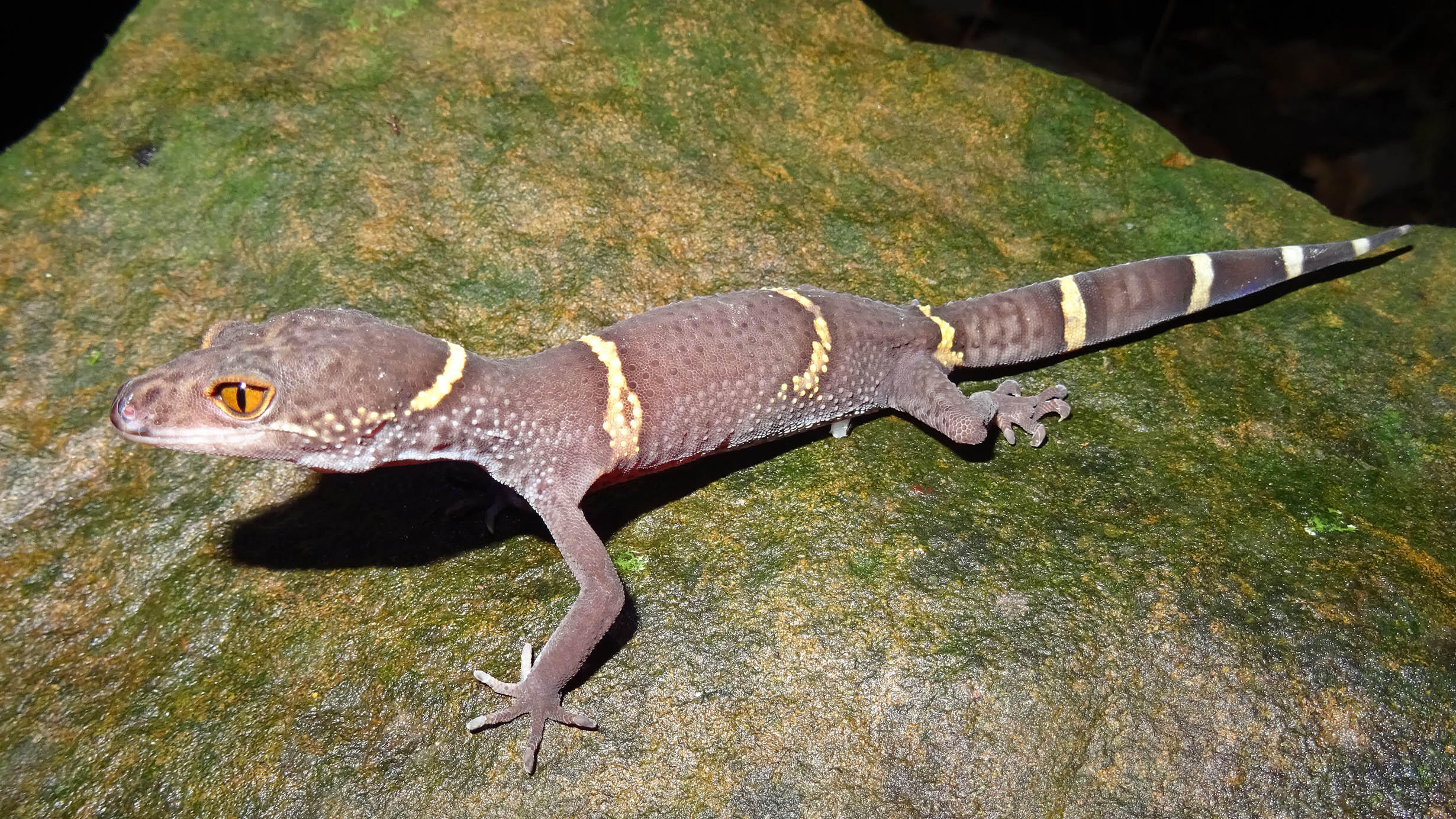 Lichtenfelder’s tiger gecko, Goniurosaurus lichtenfelderi, is a forest-dwelling lizard found on both the islands and mainland of northern Vietnam and southern China. The species is categorized as Vulnerable in the IUCN Red List.
Lichtenfelder’s tiger gecko, Goniurosaurus lichtenfelderi, is a forest-dwelling lizard found on both the islands and mainland of northern Vietnam and southern China. The species is categorized as Vulnerable in the IUCN Red List.As the world warms, many plant and animal species migrate from their traditional habitats, sometimes across national borders—an especially risky move for endangered species, which could be harmed by border infrastructure and lack of conservation coordination between countries.
A research group co-led by the Museum’s Center for Biodiversity and Conservation (CBC) recently explored this issue as it pertains to endangered species living along the border of China and Vietnam. Their work is published in a special issue of the journal Frontiers of Biogeography and stresses that strategic, coordinated approaches toward managing transboundary species and landscapes is essential to preventing biodiversity loss.
“Biodiversity is undergoing dramatic loss on the global level, and we know that it is essential to human health and wellbeing—and that one of the most complex and challenging threats to biodiversity is climate change,” said Mary Blair, the CBC’s Director of Biodiversity Informatics Research and co-editor of the special issue with collaborators Minh Le from Vietnam National University and Ming Xu from Henan University in China. “There’s an urgent need for more information about how climate change is already affecting the distributions of key endangered species and habitats to inform conservation action planning, especially in areas where there may be limited capacity or resources for management, such as Southeast Asia.”
In 2018, with funding from the Prince Albert II of Monaco Foundation, Blair, Le, and Xu began a project focused on several species that live near the China-Vietnam border and are at risk from climate change, including one of the most endangered animals in the world, the Cao Vit gibbon.
Other species in the study included one of the world’s most threatened trees, Magnolia grandis, with a total population of fewer than 120 adult trees, and the Francois’ langur, a monkey that thrives in a special type of forest that grows over limestone.
The special journal issue includes detailed studies about the threats to these species as well as commentary from the three editors on best practices for using species distribution models (SDMs), which can identify how a species’ range might shift under climate change.
The authors agree that, especially in transboundary conservation contexts, these models should be collaboratively developed from the outset.
“As global changes, including climate change, continue, we will have to increasingly work across borders to achieve biodiversity conservation goals and to do better science,” said Blair.